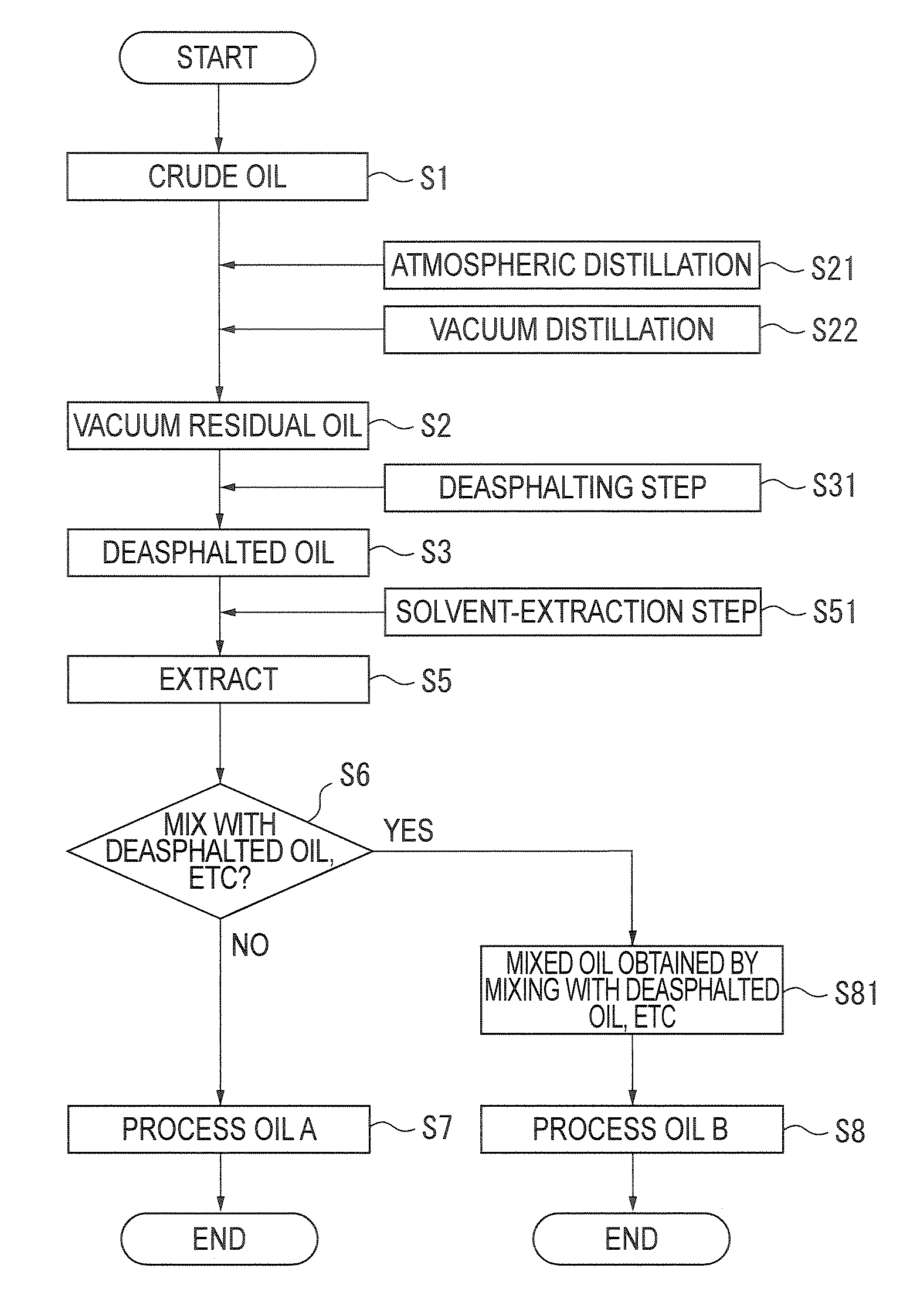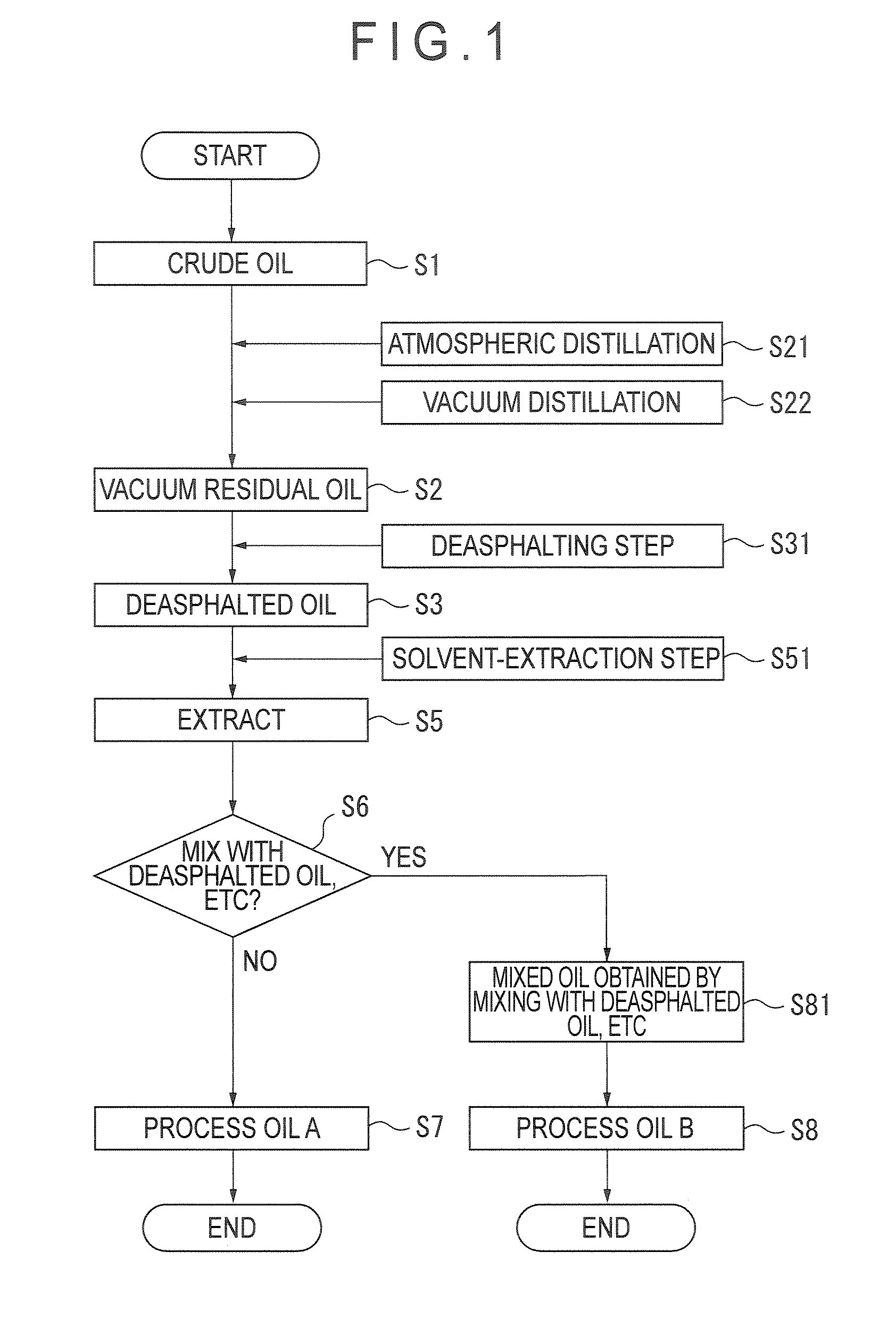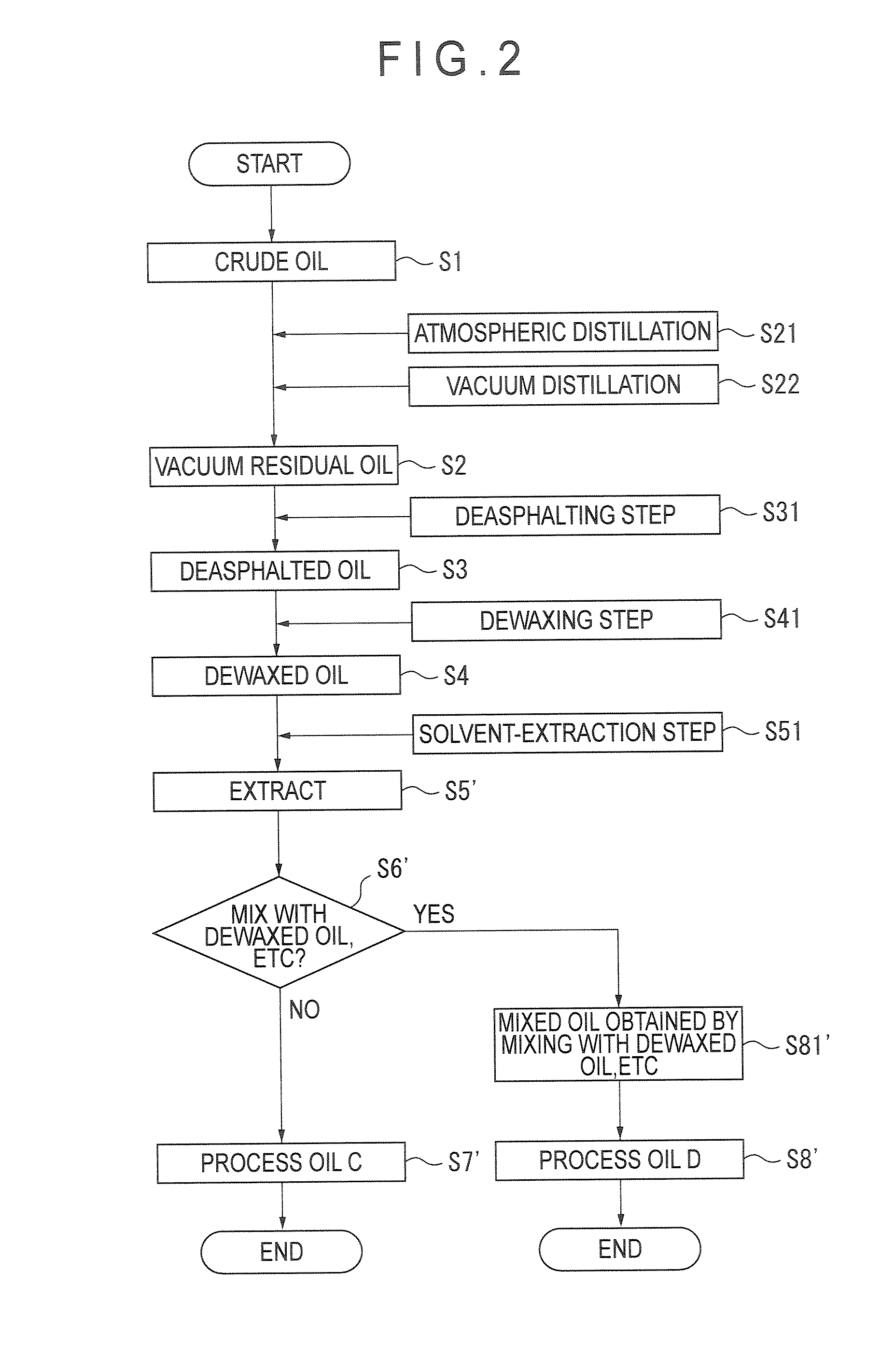Process oil, process for production of deasphalted oil, process for production of extract, and process for production of process oil
a technology for processing oil and deasphalted oil, which is applied in the direction of working up pitch/asphalt/bitumen by selective extraction, extraction purification/separation, thickeners, etc. it can solve the problem of hazardous effect of polycyclic aromatics (pca) contained in process oil, and achieve excellent safety
- Summary
- Abstract
- Description
- Claims
- Application Information
AI Technical Summary
Benefits of technology
Problems solved by technology
Method used
Image
Examples
first embodiment
Advantage of First Embodiment
[0152]Since the process oil obtained in the first embodiment described above has the properties of (a) to (f), the process oil exhibits various performances that the conventional process has required, such as processability and anti-bleeding performance of the rubber. In addition, since the PCA content that is hazardous to human bodies is controlled to be less than 3 mass %, the process oil is noncarcinogenic and thus excellent in safety.
[0153]Addition of the process oil to the natural rubber or the synthetic rubber can properly provide various types of rubber compositions, and the obtained rubber compositions can be used for various rubber products such as tires.
[0154]Further, the process oil can also be used as a plasticizer for the thermoplastic resin, a constituent of a printing ink and a softener for a modified asphalt used in paving.
[0155]Incidentally, since the conventional process oil contains high content of the asphaltene component, the appeara...
second embodiment
Advantage of Second Embodiment
[0218]Since the process oil obtained in the second embodiment described above has the properties of (a) and (i) to (n), the process oil exhibits various performances that the conventional process oil has required, such as processability and anti-bleeding performance of the rubber. In addition, since the content of the PCA that is hazardous to human bodies is controlled to be less than 3 mass % and the contents of the benzo(a)pyrene and the specified aromatic compound are respectively controlled to be 1 mass ppm or less and 10 mass ppm or less, the process oil is not carcinogenic and thus excellent in safety.
[0219]In manufacturing conventional oils substituting the aromatic oil for tires, since two-stage extraction or facility (step) for further performing hydrotreatment on the extract has been required in order to obtain such process oil, yield decreased in each treatment. In contrast, the present embodiment requires only a simple method for mixing the ...
embodiments
Modification of Embodiments
[0224]Incidentally, the embodiment described above is only an embodiment illustrating the present invention, and the present invention is not limited to the embodiment but includes modifications and improvements as long as the objects and the advantages of the present invention can be achieved. Specific structure and shape of the components in implementing the present invention may be designed in any manner as long as the objects and the advantages of the present invention can be achieved.
[0225]For example, although the manufacturing method shown in FIG. 1 is exemplified as the manufacturing method of the process oil of the present invention having the properties of (a) to (f) in the first embodiment, and the manufacturing method shown in FIG. 3 is exemplified as the manufacturing method of the process oil of the present invention having the properties of (a) and (i) to (n) in the second embodiment, manufacturing method for obtaining the process oil may be...
PUM
 Login to View More
Login to View More Abstract
Description
Claims
Application Information
 Login to View More
Login to View More - R&D
- Intellectual Property
- Life Sciences
- Materials
- Tech Scout
- Unparalleled Data Quality
- Higher Quality Content
- 60% Fewer Hallucinations
Browse by: Latest US Patents, China's latest patents, Technical Efficacy Thesaurus, Application Domain, Technology Topic, Popular Technical Reports.
© 2025 PatSnap. All rights reserved.Legal|Privacy policy|Modern Slavery Act Transparency Statement|Sitemap|About US| Contact US: help@patsnap.com



